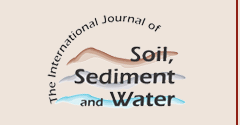Article Title
An Ecological Risk-Based Cleanup Strategy for Contaminated Sediments in a Freshwater Brook
Abstract
An ecological risk-based approach was used to define the extent of remediation in a brook adjacent to a former manufacturing and assembly plant. Sediment, soil, and surface water contained concentrations of metals, polycyclic aromatic hydrocarbons (PAHs), phthalates, polychlorinated biphenyls (PCBs), and pesticides above sediment quality benchmarks. Samples of sediment were analyzed for metals, 34 individual PAHs, phthalates, PCBs, pesticides, total organic carbon, black carbon, and sediment toxicity using the 42-day Hyalella azteca toxicity test. In addition, freely dissolved concentrations of PAHs in pore water from a subset of samples were determined using a solid phase microextraction (SPME) technique. Concentrations of freely dissolved PAHs in pore water and bioavailable PAHs in sediment were below levels of concern for aquatic organisms. Further evaluations indicated that lead was the contaminant most closely associated with sediment toxicity. A site-specific sediment cleanup level for lead in sediment was developed to define areas for sediment removal in the brook. Using the site-specific sediment cleanup level for lead resulted in a substantially smaller remediation footprint in the brook (24,434 ft2; 2,270 m2) than that originally proposed (64,799 ft2; 6,020 m2) based on exceedance of sediment quality benchmarks.
Recommended Citation
McArdle, Margaret E.; Kane Driscoll, Susan B.; and Booth, Pieter N.
(2010)
"An Ecological Risk-Based Cleanup Strategy for Contaminated Sediments in a Freshwater Brook,"
International Journal of Soil, Sediment and Water: Vol. 3:
Iss.
2, Article 4.
Available at:
https://scholarworks.umass.edu/intljssw/vol3/iss2/4
